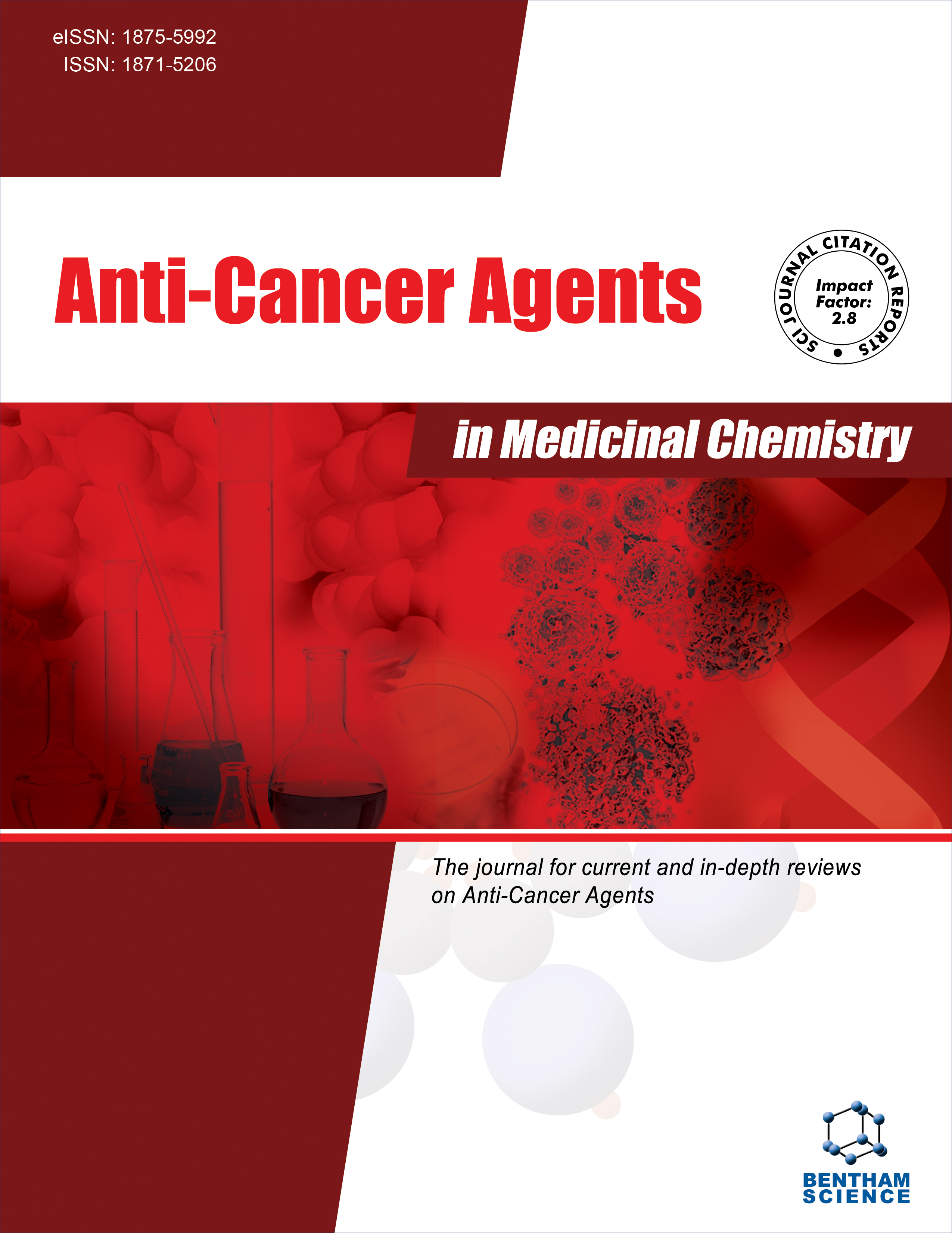- Home
- A-Z Publications
- Anti-Cancer Agents in Medicinal Chemistry (Formerly Current Medicinal Chemistry - Anti-Cancer Agents)
- Previous Issues
- Volume 6, Issue 1, 2006
Anti-Cancer Agents in Medicinal Chemistry (Formerly Current Medicinal Chemistry - Anti-Cancer Agents) - Volume 6, Issue 1, 2006
Volume 6, Issue 1, 2006
-
-
Emerging Hsp90 Inhibitors: From Discovery to Clinic
More LessAuthors: G. Chiosis, A. Rodina and K. MoulickHsp90 is a chaperone with important roles in maintaining transformation and in elevating the survival and growth potential of cancer cells. Activation of signaling pathways mediated by Hsp90 protein clients is necessary for cell proliferation, regulation of cell cycle progression and apoptosis. Additionally, gain-of-function mutations responsible for transformation often require Hsp90 for the maintenance of their folde Read More
-
-
-
Peptide Phage Display: Opportunities for Development of Personalized Anti-Cancer Strategies
More LessAuthors: T. I. Samoylova, N. E. Morrison, L. P. Globa and N. R. CoxPersonalized medicine is critical for cancer patients, because (1) cancer is a highly heterogeneous disease with major molecular differences in the expression and distribution of tumor cell surface markers among patients with the same type and grade of cancer, (2) cellular mutations tend to accumulate as cancer progresses, further increasing tumor heterogeneity, and (3) currently used cancer therapies often are toxic to no Read More
-
-
-
Gold Coordination Complexes as Anticancer Agents
More LessMetal ions are known to bind with nucleic acids and thereby alter their conformation and biological function. The metal ion-base interaction depends on the nature of both metal and bases; a certain site of coordination is preferred. One of the most notable successes for inorganic drugs has been the effectiveness of platinum complexes against cancer. These advances have spurred a surge of investigations to identify ne Read More
-
-
-
Marine Peptides and Related Compounds in Clinical Trial+
More LessAuthors: Diwan S. Rawat, Mukesh C. Joshi, Penny Joshi and Himanshu AtheayaAdvances in the sophisticated instruments for the isolation and characterization of marine natural products, and development in the biological assay systems, have resulted in the discovery of various compounds of biomedical application. Marine natural products have been a source of new leads for the treatment of many deadly diseases such as cancer, acquired immuno-deficiency syndrome (AIDS) etc. The compounds of Read More
-
-
-
Understanding Apoptosis in Terms of QSAR
More LessApoptosis is a cellular mechanism by which unwanted, defective, or damaged cells are rapidly and selectively eliminated to maintain healthy tissue homeostasis in multi-cellular organisms. In this review, we have developed nineteen quantitative structure-activity relationships (QSAR) for different series of compounds with respect to their apoptotic activities against five different cancer cell lines that are T47D, ZR75-1, DLD-1, H129 Read More
-
-
-
Vitamin D Analogs as Anti-Carcinogenic Agents
More LessAuthors: E. S. Agoston, M. A. Hatcher, T. W. Kensler and G. H. PosnerDeltanoids are the class of compounds comprising all natural and synthetic vitamin D molecules. The anti-proliferative, pro-differentiation, and pro-apoptotic properties of deltanoids have garnered interest in the fields of cancer chemoprevention and chemotherapy. The naturally occurring, biologically active form of vitamin D, 1,25(OH)2D3, causes hypercalcemia at pharmacologically relevant doses which forms a major obst Read More
-
Volumes & issues
-
Volume 25 (2025)
-
Volume 24 (2024)
-
Volume 23 (2023)
-
Volume 22 (2022)
-
Volume 21 (2021)
-
Volume 20 (2020)
-
Volume 19 (2019)
-
Volume 18 (2018)
-
Volume 17 (2017)
-
Volume 16 (2016)
-
Volume 15 (2015)
-
Volume 14 (2014)
-
Volume 13 (2013)
-
Volume 12 (2012)
-
Volume 11 (2011)
-
Volume 10 (2010)
-
Volume 9 (2009)
-
Volume 8 (2008)
-
Volume 7 (2007)
-
Volume 6 (2006)
Most Read This Month
Article
content/journals/acamc
Journal
10
5
false
en


